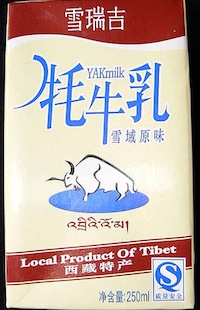 If you’re the sort who follows the more bizarre tidbits to emerge from the world of agribusiness, you’ve probably noticed that there’s been quite a stir about camel milk as of late. The United Arab Emirates, for one, has vowed to take advantage of relaxed European Union regulations regarding the import of the offbeat dairy product, which is alleged to offer a litany of health benefits.
If you’re the sort who follows the more bizarre tidbits to emerge from the world of agribusiness, you’ve probably noticed that there’s been quite a stir about camel milk as of late. The United Arab Emirates, for one, has vowed to take advantage of relaxed European Union regulations regarding the import of the offbeat dairy product, which is alleged to offer a litany of health benefits.
While the jury may be out on whether camel’s milk is actually any gentler on the human body than the stuff tweaked out of Holsteins, it’s clear that there is genuine consumer interest in such dairy alternatives. In fact, global milk drinkers are increasingly spending their hard-earned dollars on the output of animals that Old McDonald never deigned to own:
At an International Dairy Federation-organised symposium on non-cow milks in Athens this month, over 200 oral and poster presentations looked into the production and nutritional profile of dairy products that have never seen a cow.
Milks made from sheep, goat, yak, camel and buffalo were all put under the microscope as the industry looked to explore the nutritional and economic potential of these products. They have already grown in importance in the global dairy market. Back in 1961 non-cow milk represented 8.9 per cent of global milk production but now its share has risen to 16.7 per cent.
The underlying assumption here is that consumers have become more cognizant of the source of their dairy. But I always distrust narratives that pat folks on the back for becoming less gluttonous. I wonder if non-cow milks will once again slip into semi-obscurity as global trade barriers come down, thereby allowing products from dairy cows to be shipped to new markets. At the end of the day, dairy cows have an advantage over yaks and camels that will never go away: they produce a heckuva lot more milk. (A Holstein can squirt out about 23 times more milk per day than a yak.) In the long run, it’s tough to imagine global consumers sticking with the non-cow milks they know when a nice glass of Nestle Quik can be had for a third of the price.
Related: Chinese milk production, 1980 to 2008. It’s all about the cows over there.
(Image via Strange Taste Horsebeans)


Like gas stations in rural Texas after 10 pm, comments are closed.